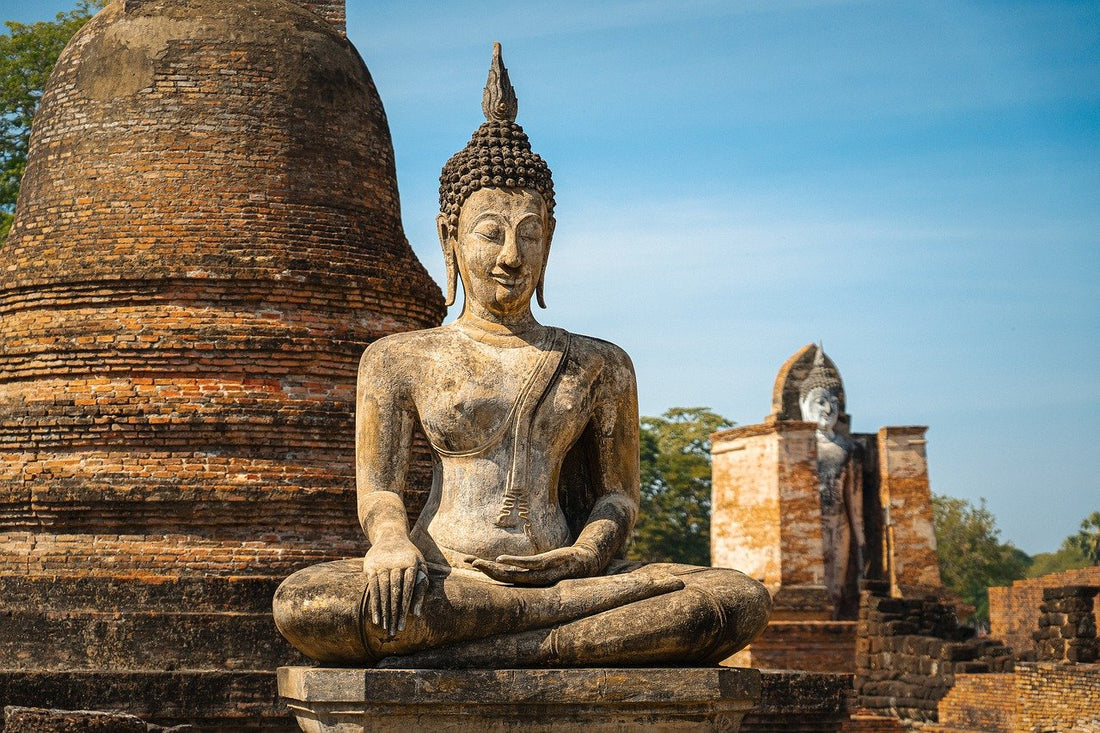Depictions of Buddha almost always involve him sitting, standing, or reclining in precise postures. His body and his hands are often placed in a particular posture or asana that integrates Buddhist symbolism. This conscious placement of the body and, specifically, the hands is called a mudra. This symbolic gesture invites in a specific intention. Many statues or images show Buddha sitting with his legs crossed. His left hand is resting in his lap with the palm facing up. His right hand is dangling over his right knee, with all five fingers stretching to touch the earth. This representation of Buddha captures the moment that he reached and claimed enlightenment.
While Buddha was meditating under a Bodhi, Māra tried to lead him into temptation. Māra is sometimes called 'Lord of the Senses' or 'Lord of Death.' He represents desires and the things we hold on to that may be hindering us from obtaining non-attachment, and therefore, enlightenment. Māra tried to tempt Buddha out of his meditative state on multiple occasions. First. he sent messengers with the news that rivals had seized the throne from Gautama Buddha's family. Remember that Buddha was a prince in line to the throne before he embarked on his journey of enlightenment.
When Māra saw that this was unsuccessful in disturbing Buddha's meditation, he sent storms of rain, rocks, ashes, and darkness. Next, he sent his three daughters: Trsnā (thirst), Rati (desire), and Rāga (delight) to seduce Buddha. Lastly, Māra challenged Buddha, proclaiming that the seat of enlightenment rightfully belonged to him and not Buddha. Māra demanded to take Buddha's seat under the Bodhi tree and, thus, as the first enlightened being. To this, Māra's demon soldiers cried out, 'I am his witness.' Māra turned to Buddha and asked: 'Who will speak for you?'
In that moment, while sitting in his posture of meditation, Buddha reached out to touch the earth with his right hand. Some believe that through this gesture, Buddha summoned the earth goddess Sthavara herself to bear him witness. The earth spoke, roared, with its response: 'I bear you witness!' When Māra heard this declaration, he disappeared.
This posture of Buddha became known as the Bhumisparsha mudra. The word translates to 'touching the earth' and is more commonly known as the 'earth witness' mudra. The combination of the left hand in the lap with its palm facing up and the right hand touching the earth invites in the sense of acting (the right hand) from a space of wisdom (the left hand).
Enlightenment represents non-attachment, and therefore, freedom from Māra and the desires he brings. Buddha once said: 'It makes no difference what you grasp; when someone grasps, Māra stands beside him.' While this is true for all things, the Bhumisparsha mudra is especially effective at transforming anger. The second Dhyani Buddha, Akshobhya, is often also depicted in this pose. He believed that it could transform the delusion of anger or rage into wisdom. Earth touching Buddha statues symbolizes the moment that Buddha became enlightened – witnessed by the earth. It motivates action inspired by wisdom. It is a powerful image and posture to practice when meditating on letting go of attachment to all things and of anger in particular.




